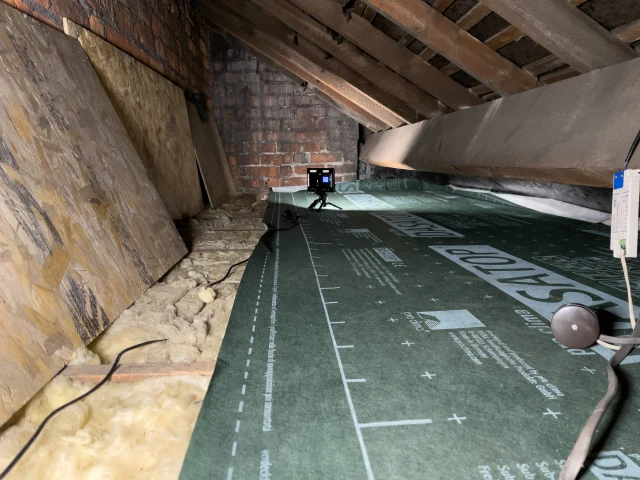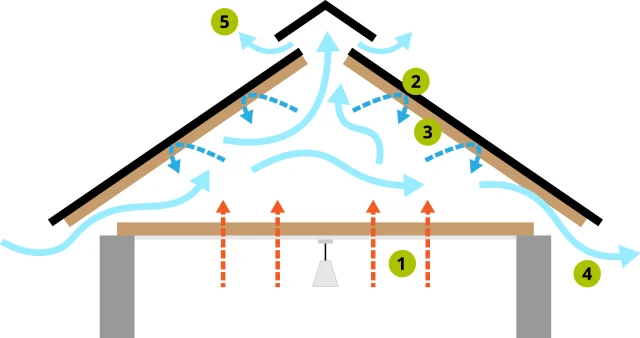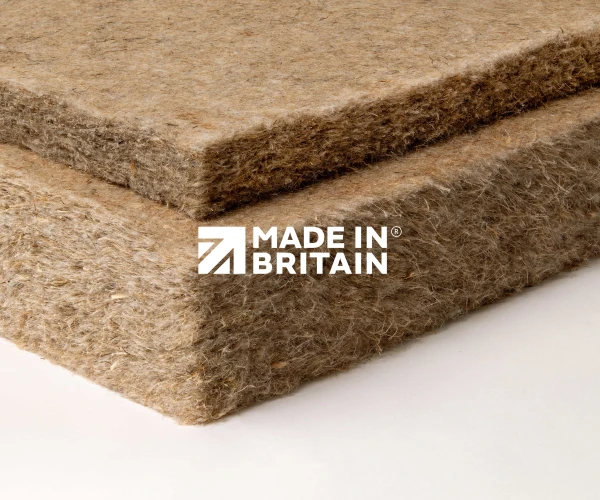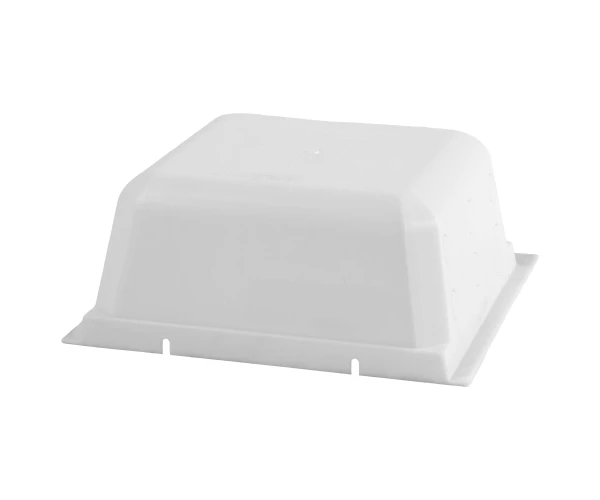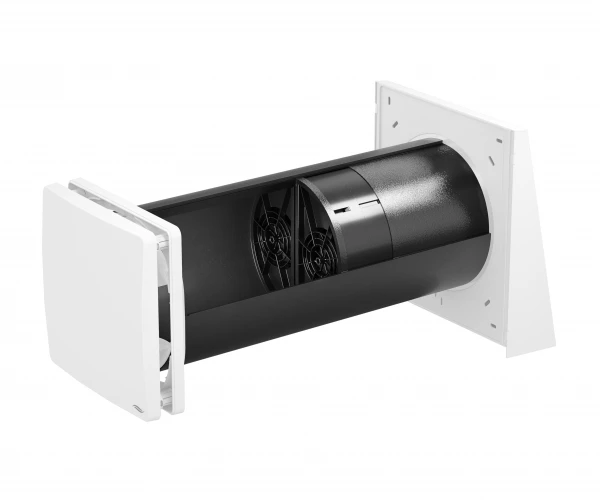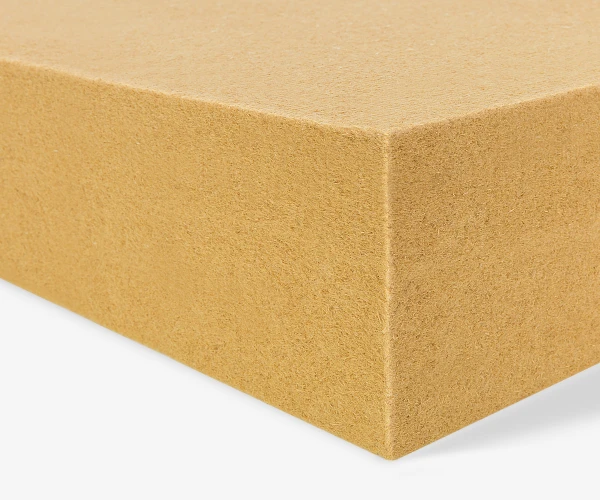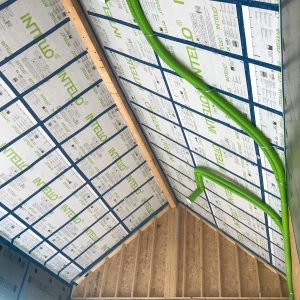Go to Section
Why does condensation happen?
Condensation occurs when warm, moist air hits a colder surface. This causes the evaporated moisture to turn back into water, like you see around a cold glass on a warm, humid day.
Lofts are a common place to see condensation issues, because when the warm, humid air from your house’s living areas rises, the cooler loft space is the perfect place for condensation to build-up.
Condensation in a loft can occur for a few different reasons:
- Poor ventilation: A lack of proper air circulation in the loft space can lead to the build-up of warm, moist air. Without adequate ventilation, the humidity won’t be able to escape, and water will become trapped and condense onto the inside of the loft.
- Insufficient insulation: Loft insulation prevents warmer air rising from the floors below. If your loft isn’t appropriately insulated, there’s nothing to stop the air from passing upwards, and you could see increased condensation, as well as increased heating bills.
- High levels of moisture: Activities like cooking, washing, and drying clothes can introduce more moisture into your home. If this moisture isn’t effectively removed or ventilated when it builds up in your living spaces, it can accumulate in the loft space and cause condensation.
- Leaks or damage: leaks or damaged areas in your roof can also allow water to seep into your loft, causing dampness and condensation.
As always, it’s vital to check for any damage or maintenance issues which could be causing your condensation problems first. Once you’re confident that this isn’t the case, there are a few approaches to reducing condensation in your loft space:
Choose natural loft insulation
Priority number one is to properly insulate your loft with at least 270mm of insulation. This will help prevent warm air from travelling up out of your living spaces, reducing the chance of humidity building up and causing condensation.
Natural insulation can be particularly helpful with reducing condensation build-up. Natural insulation like Indibreathe Flex, Thermafleece Cosywool or Gutex Thermoflex has hygroscopic properties, meaning it temporarily absorbs excess moisture from the air, preventing this from being deposited as condensation elsewhere. Natural insulation can do this without affecting its thermal performance, making it a great choice for regulating humidity in your loft space.
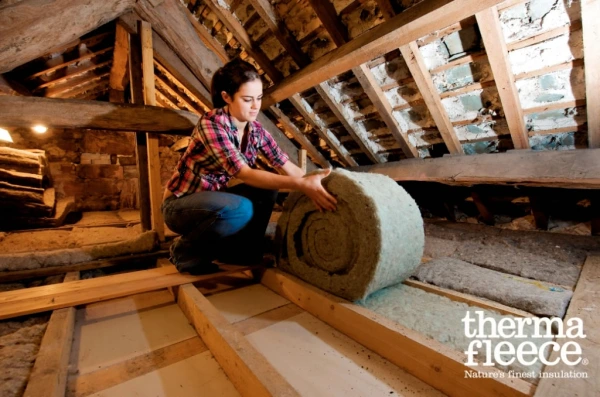

Ventilate your loft
If humid air makes its way up into your loft, it’s important that it has somewhere to go – if warm air can’t escape somehow, condensation is unavoidable.
In the UK and Ireland, the most common type of roof is called a cold ventilated loft, and it incorporates ventilation gaps in the eaves, and sometimes vents in the ridge tiles, to allow fresh air to circulate through the space.
If your roof doesn’t have adequate ventilation, more vents could help to get airflow moving again. Adding intake vents at the eaves (the lower part of the roof) and exhaust vents near the ridge (the upper part of the roof) will help draw out moist air and allow fresh air to enter. This can be done using either passive vents (gable vents, soffit vents, or ridge vents) or powered vents (extraction fans).
Ventilate your home
If your home’s living areas are not properly ventilated, humidity will have nowhere to go but up, meaning it will eventually make its way to your loft (as well as causing damage in lots of other areas of your home too). Ensuring that you’re not blocking airbricks or other ventilation, that you’re using trickle vents on your windows if they’re installed, and that you’re regularly running extractor fans, can all help to reduce humidity and condensation.
Our range of super-quiet low-energy Inventer extractor fans and single-room ventilation fans with heat recovery are great tools to provide a healthier indoor air quality and extract excess humidity. If your home’s ventilation is not enough, consider using a dehumidifier to reduce the overall moisture content in the air.
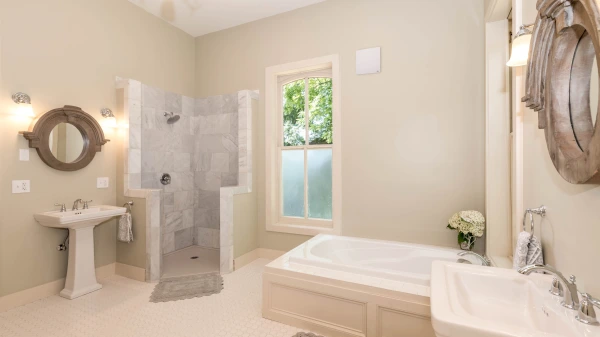
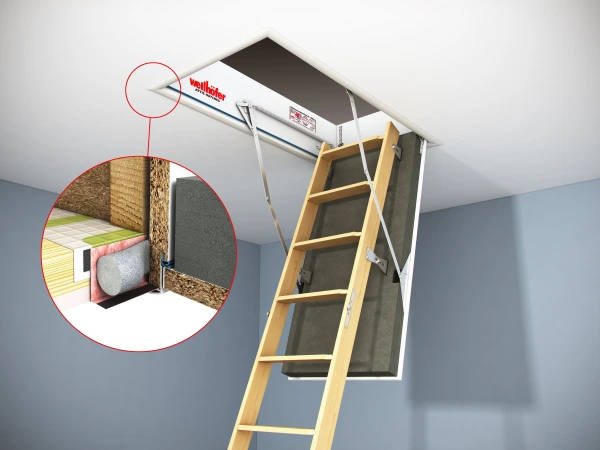
Seal gaps between your loft and living space
Even if your loft is well insulated, moisture may find its way in from below via any gaps in your ceiling, so sealing these can help to both insulate your living space and minimise the risk of condensation.
If you have recessed downlights in your ceiling, consider covering these using Optime Airtight Downlight Protectors to seal the gap. For your loft hatch itself, an insulated option such as the Wellhöfer airtight loft hatch is a great choice to minimise heat loss and keep your loft space dry.
Add a vapor control layer
A vapor control membrane, such as Pro Clima Dasatop or Pro Clima Intello Plus, can provide an airtight barrier between the living space and unheated areas like your loft. This prevents moisture from entering your loft and also helps to improve airtightness, increasing your thermal insulation performance as well.

Beat loft condensation for good
If you have questions about selecting the right products to reduce condensation in your loft, the expert team at Ecological Building Systems can provide help and advice.


